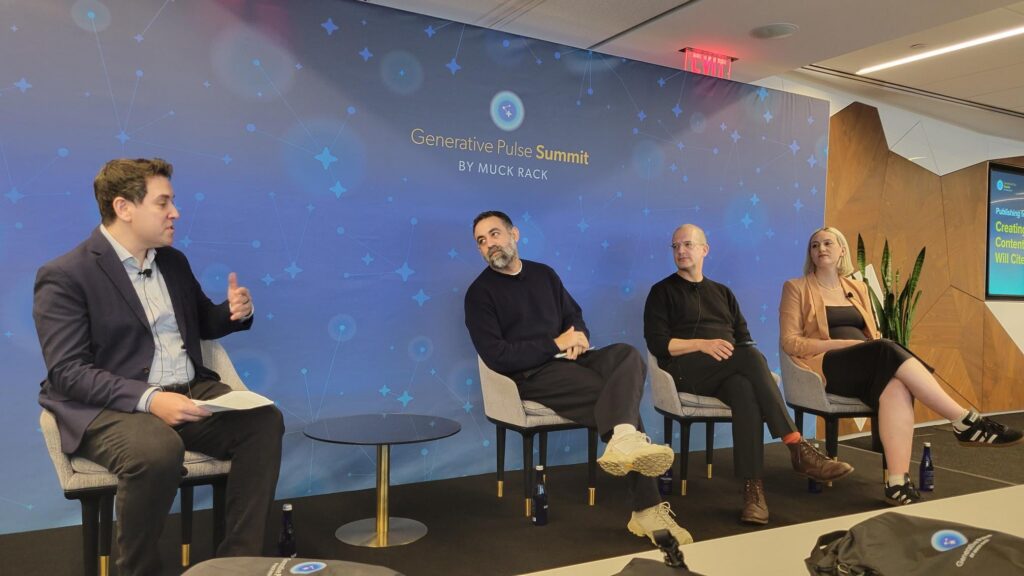Whether we want to admit it or not, our B2B buying decisions have an association with our personal desires. The reasons we choose one option over another tie back to personal needs and consequences. There is a natural cognitive bias that influences what we determine to be favorable options.
For example, a decision to stick with a proven vendor during an RFP process may enable desired feelings of confidence and job security. For others, moving forward with a new vendor who can cut costs in half may better the likelihood of success. That new direction can lead to being recognized and promoted. These are two examples, among many personal motivations, we see activated in a business decision.
Cognitive bias is not a new concept
Psychology Today has reported on groundbreaking findings on cognitive biases that demonstrate, quite unequivocally, that humans make decisions and act in ways that are anything but rational. Cognitive psychology tells us that the human brain uses a network of thoughts to make decisions.
This cognitive process is referred to as dual process theory, which was popularized by Daniel Kahneman in his bestselling, Nobel Prize-winning book, Thinking, Fast and Slow. Kahneman argues that if we were to break the brain into two parts, there are moments in which we make quick and decisive decisions and there are other decision-making processes that are more abstract and require slow, intensive thought.
Our business needs ultimately fulfill personal needs
If business needs ultimately fulfill our personal needs, how do we better influence individuals who we are trying to sell a new service or even an idea to? The answer is we must understand and quantify both the rational and non-rational processes by which consumers make decisions. Ironically, we tend to see most marketing address rational needs, but rarely ever the irrational but salient needs that more often drive the individual’s decisions.
Tapping into the unconscious needs
Psychologists have identified two broad categories of decision-making orientations: those that are seeking pleasure (aspirational) and avoiding pain (preventative).
- Aspirational individuals make decisions that enable achievement and positive recognition by others (playing to win).
- Preventative individuals make decisions to obtain feelings of security and less stress in their interactions with others (playing to not lose).
Harvard Business Review published an article that hits hard on this concept, “Do You Play to Win – or to Not Lose?” The authors, Heidi Grant Halvorson and E. Tory Higgins, note that individuals are either “promotion” focused or “prevention” focused. These motivational differences affect how individuals approach life’s challenges and demands. Some individuals are comfortable taking chances, dream big, and think creatively, but this can lead to speedy work and outcomes that may not prove as positive as originally planned (essentially risk).
Prevention individuals, in contrast, see their goals as responsibilities (valuing financial security for example) and they concentrate on staying safe. They worry about what could go wrong if they do not work hard enough and tend to be more analytical, sometimes missing a greater reward by avoiding risk. Language needs to be framed to the audience’s dominant motivational focus in order to optimally influence them, which leads us to marketing implications.
Applying consumer psychology in the business world
Brands are responsible for understanding what will influence prospects to make a purchase. An effective way to maximize persuasion during the purchase process is using personas to create relevancy. Personas are created by brands to understand individual needs of customers by addressing unique characteristics, motivations, needs and environments that affect buying behavior within the market.
Creating personas based on buyer insight (such as motivational research) is an effective way to translate that knowledge into an actionable audience strategy — one that can help individuals across an organization to understand customers’ key traits and motivations, and ultimately speak to customers in a cohesive manner that pushes them down the purchase path.
According to Cintell’s “2016 Benchmark Study on Understanding B2B Buyers,” personas are not only effective, they’re also lucrative. Of the nearly 140 B2B companies studied, organizations that exceed their lead and revenue goals are 2.2 times more likely to have formally documented personas than companies that miss those targets.
Most marketing tends to address rational decision making. But we need to understand latent (or unconscious) needs of our customers in order to introduce personal relevance into messaging in the most meaningful way. At Merkle, for example, we use motivational research (a technique known as laddering) to understand latent needs (personal security or social recognition, for example) that influence purchase decisions.
In a recent B2B buyer motivation study we conducted on how electrical engineers choose supply vendors, two dominant personas emerged. One was more ‘aspirational’ in their decision making process and the other was a more ‘preventative’ buyer.
The first persona, the Security Seeker, is preventative as he seeks to avoid loss. He wants to be seen by others as a valuable contributor and feel secure in his job as a way to ensure his family maintains financial security. He tends to work with suppliers who better enable him to hit time and budget goals in order to maintain respect within his position.
The second persona, the Advancement Seeker, to is aspirational as he seeks pleasure. This persona seeks personal satisfaction and career growth due to project success. He is driven to advance in his career and the positive self-esteem that follows. He prefers providers who can get the answers he needs quickly and provide lower cost products so he can maximize his budget in order to ‘do more’.
Now that we have a deep understanding of the audience and WHY they are motivated in decisioning, we can craft a message to them in a more resonate and meaningful way.
There is power in knowing what makes your ‘buyer’ tick.
A Fortune 500 company recently applied consumer motivations to B2B digital content and found that when their email campaign connected relevant personal and product needs, there was a 340% lift in open-rate and a 170% lift in clickthrough rate compared to the historical benchmark (without motivational-based insight). By taking the time to understand what the audience cared about on a deeper level and writing in a way that reflected that need, they were able to drive substantial improvements.
At the end of the day, we want the person we are targeting to be persuaded by our message. In order to do this effectively, a full picture of the decision-making mindset matters.
Jennifer Perry is associate director of audience strategy at Merkle.



